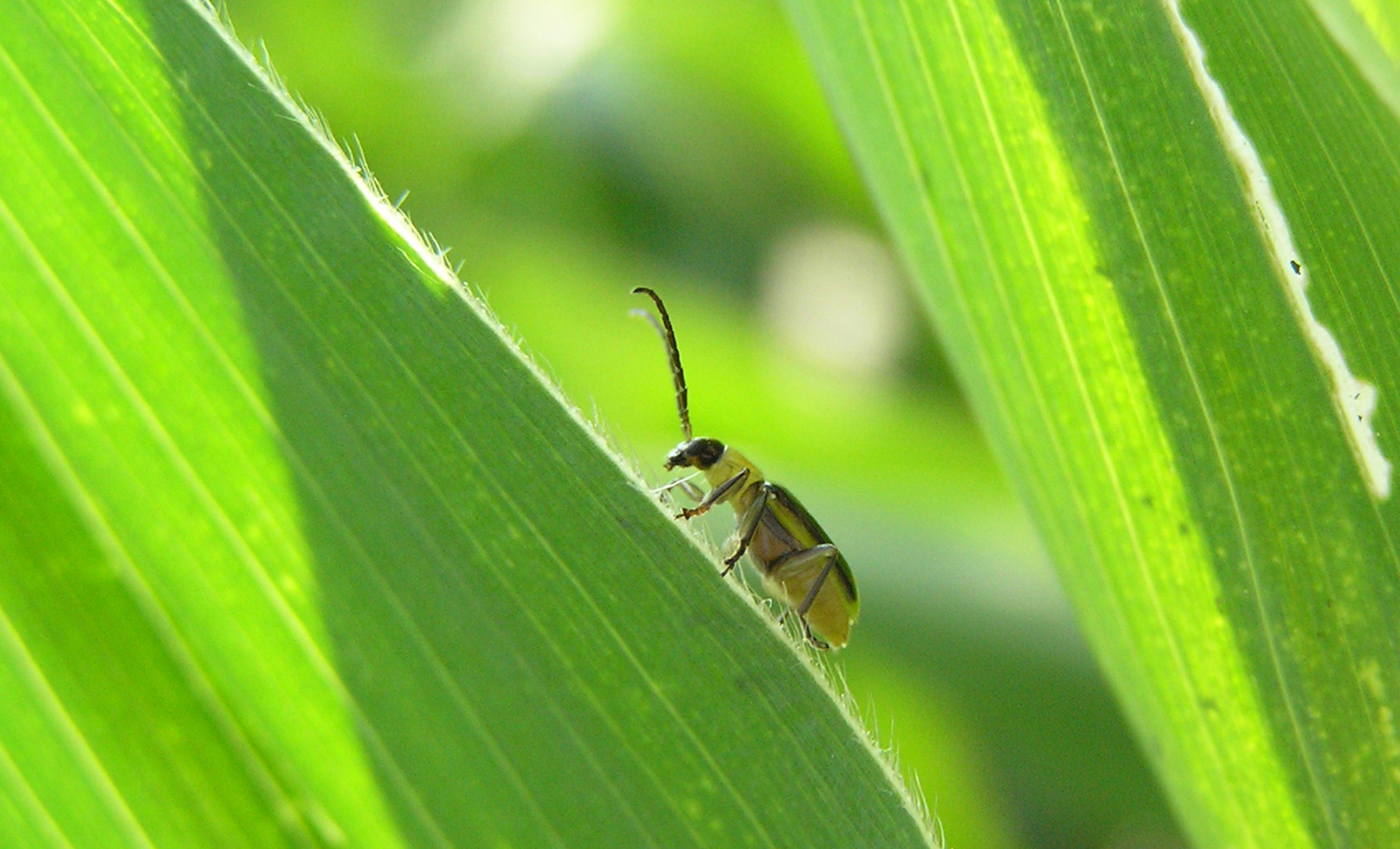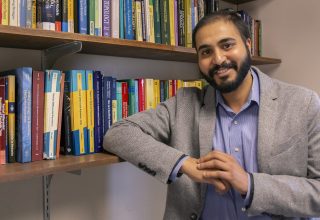Conquering Invasive Species with Mathematics
Author: Lona

Author: Lona

BY ANGIE HAGERTY
Mathematics is about solving complex problems and finding answers. Rana Parshad, assistant professor of mathematics, is harnessing the power of mathematics to solve the complex problem of invasive species and halt the damage that these unwanted invaders inflict on ecosystems.
“Once an invasive species spreads, establishes and flourishes within local populations, it can be very destructive and difficult to control,” Parshad said.
Non-native organisms that take up residence in new environments often cause untold economic loss and serious environmental damage as they devour, destroy and displace native plants and animals.
“In a lab setting, we’re able to document the extinction of these predators,” Parshad said. “Our mathematical models enable us to calculate how quickly a specific control will eliminate an invasive species.”
The wall-to-wall chalkboard in Parshad’s office is overcrowded with formulas, derivatives and equations. Although this tangle of numbers may seem random or even chaotic, these custom calculations are purposeful in how they help wildlife biologists, scientists and conservationists choose the best methods for eliminating a particular invasive species.
“We’re able to give researchers a finite timeline that reveals how long it will take their proposed solution to eradicate a species,” Parshad said.
Knowing when an ecosystem could be free of an unwanted and out-of-control pest helps researchers illustrate and explain their plans to field experts who are entrenched in the marshes and analyzing crops in the field—fighting these invasive species on the front lines.

Rootworms and corn borers are relentless invaders. They inflict extensive crop damage as they burrow into corn stalks, weaken the plant and suppress its ability to produce healthy corn.
Every year, American farmers sustain more than $1 billion in revenue losses due to these voracious pests.
Tom Sappington has a front row seat to the damage.
Affiliate professor and research entomologist for the United States Department of Agriculture’s Corn, Insects and Crop Genetics Research Unit, Sappington is an expert on Western corn rootworms and the European corn borer.
Parshad and Sappington have agreed to join forces in an effort to better understand and control these relentless insects.
Armed with an arsenal of mathematics and entomology research, Parshad and Sappington will pool their areas of expertise in the coming months, while harnessing Sappington’s 30 years of experience in integrated pest management.
“Eradicating these invasive insects is a very daunting task, because they’re well established and they have very large population sizes,” Sappington said. “I’m excited to collaborate with Dr. Parshad. His ideas about applying mathematics to these big problems are fascinating. They open up a whole new realm of possibilities.”
Last spring, Parshad approached Sappington with a proposal. Parshad would train two students to work directly with Sappington. In the field, these students would observe the laboratory and on-site methods that Sappington has studied and implemented during his years of battling rootworms and corn borers.
Both of Parshad’s students and their research will be funded through a National Science Foundation Research Experience for Undergraduates (REU) grant.
This proposed collaboration involves the implementation of a clever biocontrol. A predator insect is released into an area infested with rootworms and corn borers. Researchers then boost the predator’s efficiency by planting protective vegetation.
These botanical enhancements provide refuge and cover to the predator, enabling it to thrive and multiply. Eventually, as the predator feasts on these corn borers and rootworms, the pest population dwindles.
“I am excited about forging this connection with Dr. Sappington, a well-known authority on integrated pest management,” Parshad said. “This fusion of mathematics expertise and entomology research allows us to tackle complex, real-world problems using new strategies.”
The data generated from the mathematical models allow researchers like Sappington to more precisely monitor the refuge-protection strategy. As the models quantify the effectiveness of the strategy, researchers adjust their experiments accordingly.
Parshad notes that solutions with minimal environmental impacts are optimal.
“Our team focuses on analyzing biological-based—or natural solutions—that are better for the environment and less harmful to native fauna,” Parshad said. “Poisons are common, but they are toxic and can kill plants and animals.”
Kim Bogenschutz, the Iowa Department of Natural Resources’ aquatic invasive species coordinator, describes Iowa’s invasive species problem as “challenging” and “very expensive.”
In Iowa, the emerald ash borer has burrowed its way through trees in 64 counties, killing off ash trees in the Midwest. Zebra mussels and Asian carp have ravaged many Iowa lakes and rivers by depleting the foundational plankton that sustain most freshwater aquatic species.
“The numbers from these mathematical models could help us to determine if a particular solution is viable, affordable or even feasible,” Bogenschutz said. “Knowing how long it would take to get an invasive species under control would be extremely helpful.”
As the crisis of invasive species spreads in Iowa and around the globe, so has the need to assess, calculate and clearly understand the resulting environmental destruction.
“Now researchers want to quantify this damage,” Parshad said. “This is where the mathematicians come in.”
“I’m excited about adding new members to the team in the coming year,” Parshad said. “We’ll be tackling global problems that impact the world’s food supply and the farmers who grow our food.”
During the summer of 2020, Parshad’s undergraduate students will work with Sappington and his lab members to gain a deeper understanding of integrated pest management.
“It’s one thing to develop mathematical models,” Parshad said. “It’s another to stand in a cornfield and witness the research for which you are developing these models. This will help these young researchers gain a richer appreciation for how the math will be applied.”
In 2018, Parshad’s mathematical modeling on the Trojan-Y Chromosome strategy (TYC) research earned him a $420,000 NSF grant from the Division of Mathematical Sciences, Mathematical Biology Program.
Hal Schenck, professor and chair of the Department of Mathematics, says that partnerships between the worlds of mathematics and biology are valued and encouraged at Iowa State.
“All science comes down to quantifying things,” Schenck said. “We are working hard at Iowa State to build bridges between the mathematics department, private industry and researchers in other fields.”